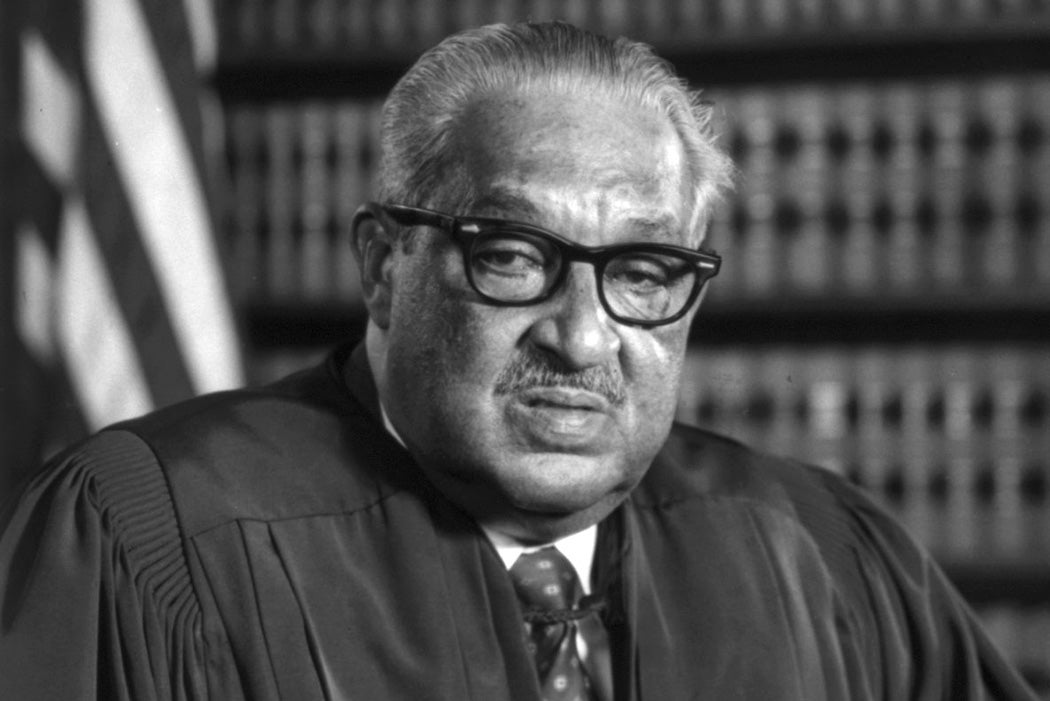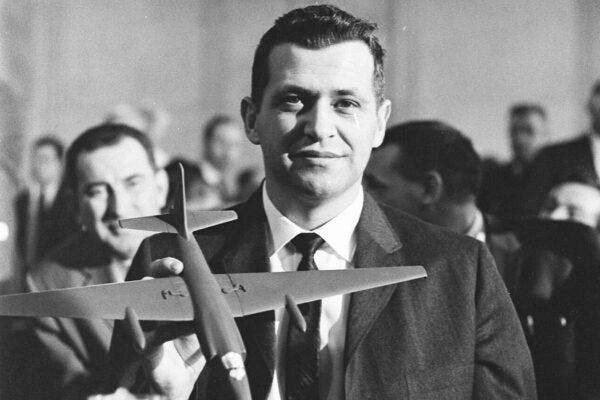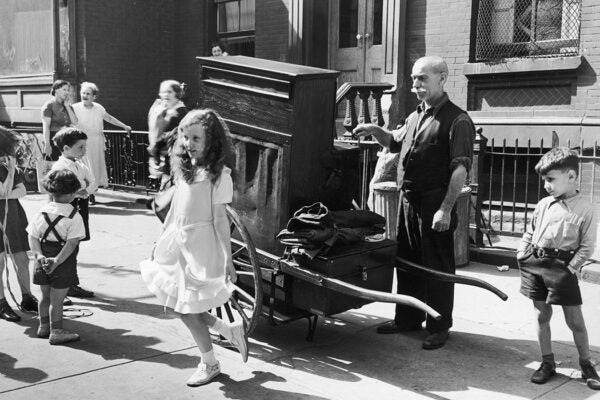On August 30, 1967, Thurgood Marshall became the first Black American to be confirmed as United States Supreme Court Justice. He brought to the bench an already stellar legal and political career. As a civil rights lawyer, he led the NAACP Legal Defense and Education Fund in its fight against Jim Crow laws in higher education, arguing Sweatt v. Painter (1950) and McLaurin v. Oklahoma Board of Regents of Higher Education (1950), both precedents for Brown v. Board of Education (1954). When Brown, a consolidation of several cases, came before the Supreme Court, Marshall successfully argued that the “separate but equal” doctrine was a violation of the equal protection clause of the Fourteenth Amendment to the US Constitution.
Marshall’s tenure on the Supreme Court “surpassed all others in securing constitutional access and opportunity for America’s poor and disenfranchised,” opined Julius L. Chambers, then Director-Counsel of the NAACP Legal Defense and Educational Fund, on the occasion of Marshall’s retirement from the court in 1991. Throughout his career, Marshall had “developed test case litigation strategies which systematically identified and vindicated constitutional rights of African Americans,” added Chambers.
Marshall understood his role as a lawyer and a judge as one that provided legal recourse to the powerless, particularly those working within a legal system that was biased against them from the beginning—because that’s how he viewed the founding legal documents of the United States: unjust, and deliberately so. But it was within America’s power to fix those mistakes.
Weekly Newsletter
“I do not believe that the meaning of the Constitution was forever ‘fixed’ at the Philadelphia Convention. Nor do I find the wisdom, foresight, and sense of justice exhibited by the framers particularly profound. To the contrary,” he wrote in 1987,
the government they devised was defective from the start, requiring several amendments, a civil war, and momentous social transformation to attain the system of constitutional government, and its respect for the individual freedoms and human rights, that we hold as fundamental today. When contemporary Americans cite “The Constitution,” they invoke a concept that is vastly different from what the framers barely began to construct two centuries ago.
For a sense of the evolving nature of the Constitution we need look no further than the first three words of the document’s preamble: “We the People.” When the Founding Fathers used this phrase in 1787, they did not have in mind the majority of America’s citizens. “We the People” included, in the words of the framers, “the whole Number of free Persons.” On a matter so basic as the right to vote, for example, Negro slaves were excluded, although they were counted for representational purposes—at three-fifths each. Women did not gain the right to vote for over a hundred and thirty years.
These omissions were intentional.
The deliberate injustices written into the Constitution could be balanced only by allowing the Constitution to evolve as did the nation, addressing disparities in access to suffrage, education, and other fundamental rights.
Read more on Marshall’s interpretation of the US Constitution, in his own words, in “Reflections on the Bicentennial of the United States Constitution,” available to read and download free-of-charge from JSTOR.







